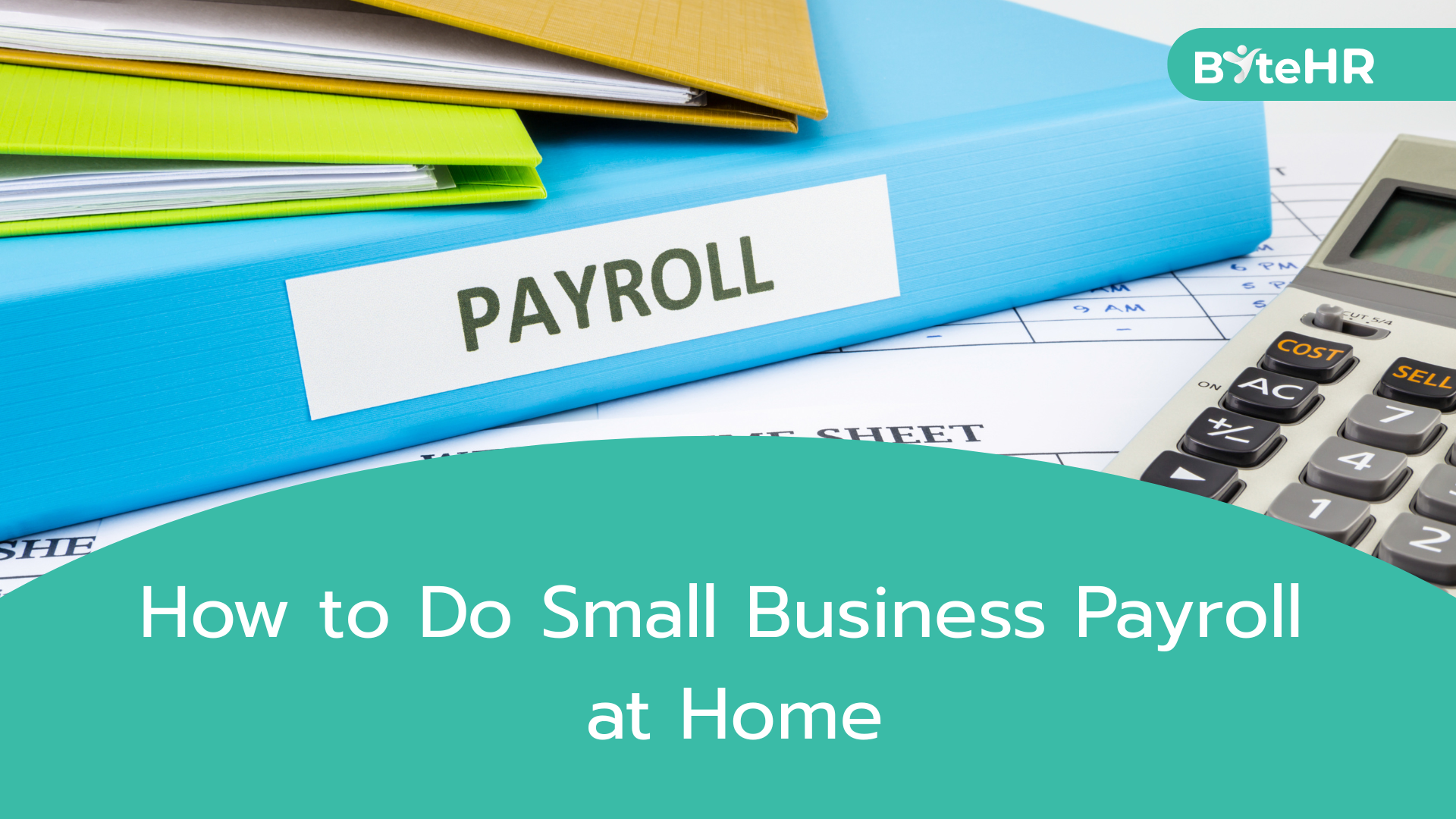How to Do Small Business Payroll at Home

Running payroll from home might seem complex, but with the right system and tools, it’s manageable. Whether you’re a startup owner or managing a few contractors, understanding payroll basics can help you save time, money, and avoid compliance issues.
Understanding Payroll
Payroll covers everything from calculating gross pay to making deductions, paying employees, keeping records, and staying compliant with regulations. For small businesses, this includes tracking hours, managing multiple pay rates, processing allowances, and creating payslips. Accuracy and consistency are crucial.
Step 1: Set Up Your Payroll System
Start by collecting key employee details—full name, ID number, tax ID, bank account, salary terms, and benefit information.
Choose a payroll schedule (monthly, bi-weekly, or weekly) that fits your cash flow and stay consistent.
Create a payroll calendar marking pay dates, tax filings, and reporting deadlines to keep track of obligations.
Step 2: Track Employee Hours
Accurate time tracking ensures correct pay.
Use digital time-tracking tools or apps that integrate with payroll systems for efficiency. For very small teams, a simple spreadsheet can suffice.
Set a clear attendance policy outlining clock-in procedures, overtime approval, and absence reporting.
Step 3: Calculate Gross Pay
For salaried employees, divide annual pay by the number of pay periods.
For hourly workers, multiply hours worked by their rate, adding overtime at the premium rate (typically 1.5x). Include bonuses, shift pay, or commissions earned.
Step 4: Process Deductions
Gross pay minus deductions equals net pay—the amount employees receive.
Mandatory deductions usually include income tax, social security, and pension contributions. Voluntary deductions may cover insurance premiums, retirement contributions, or union dues.
Maintain a deduction checklist for each employee and update it promptly when needed.
Step 5: Generate Payslips
Payslips are legally required and should list pay period dates, gross pay, itemized deductions, and net pay.
Use spreadsheet templates or payroll software to create and distribute digital payslips via email. This not only saves time but also provides employees with instant access to their records.

Step 6: Process Payments
Direct bank transfers are the most efficient payment method. Use a separate business bank account to simplify tracking.
If paying by check, maintain a dedicated payroll checkbook.
For contractors, payments don’t usually require deductions, but you must still record them for tax and reporting purposes.
Step 7: Maintain Records
Keep thorough records for all payroll activities—employee details, contracts, attendance, payroll registers, payslips, and tax transactions.
Use digital systems and cloud storage for easy access and backups.
Retain payroll records for at least seven years or as required by local law.
Step 8: File and Remit Taxes
Filing taxes accurately and on time is one of the most important parts of payroll.
Track due dates for tax submissions and use reminders to prevent missed deadlines.
Consult an accountant when setting up procedures to ensure you comply with all local and national tax laws.
Choosing the Right Tools
Spreadsheets like Excel or Google Sheets are ideal for small teams. They’re free and flexible but require manual input.
Payroll software automates calculations, generates payslips, and manages tax filings, making it a great fit for growing businesses.
Full-service payroll providers handle everything, freeing up your time though at a higher cost. Choose based on your business size and comfort level with compliance management.
Common Mistakes to Avoid
Missing deadlines for payments or tax filings. Use multiple reminders.
Misclassifying workers as contractors or employees incorrectly. Know the difference.
Poor record-keeping, which complicates audits and disputes.
Ignoring regulation updates, risking non-compliance. Subscribe to official updates or work with a payroll advisor.

When to Get Professional Help
Consider hiring a payroll or accounting professional if:
You’re unclear about tax laws.
Your workforce is expanding rapidly.
You offer complex compensation structures.
You’re facing an audit or compliance concern.
Even a one-time consultation can help verify your process and ensure future accuracy.
Conclusion
Running small business payroll from home is entirely possible with proper organization and reliable tools. Focus on accurate tracking, timely payments, and meticulous record-keeping. Stay updated on labor and tax regulations, and seek advice when needed.
Payroll is more than a financial task—it’s a trust-building process. Paying your team correctly and consistently helps foster a positive work environment and strengthens your business culture, even if your office is at home.
For Malaysian business owners, selecting the right HR software in 2025 is crucial. Learn more in Top 5 HR Software in Malaysia for 2025or contact ByteHR for a free consultation at 036 419 5276 or salesmy@byte-hr.com. Effective HR management supports better performance, retention, and sustainable growth.


